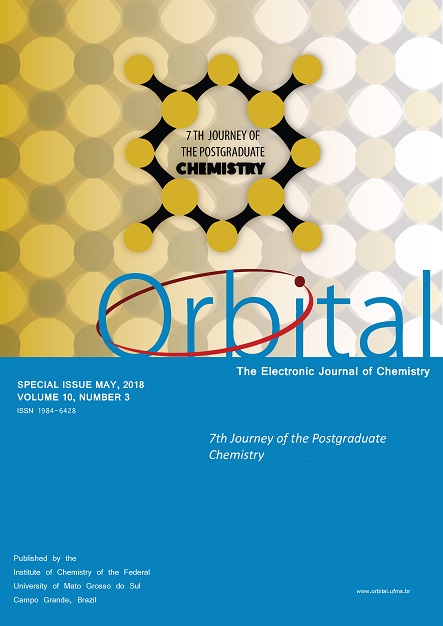- caffeine,
- HPLC,
- edible mushroom,
- Pleurotus ostreatus
Copyright (c) 2018 Orbital: The Electronic Journal of Chemistry

This work is licensed under a Creative Commons Attribution-NonCommercial-NoDerivatives 4.0 International License.
Abstract
The chemical composition of mushrooms is influenced by the substrate in which it is cultivated due to absorption of chemical compounds from the substrate. In the current study, the edible mushroom Pleurotus ostreatus was cultivated in three diverse ways: in seeds grown on substrates based on coffee residues and inoculated in rye grass and; in the coffee seeds without rye grass; and in wheat seeds with rye grass (reference mushroom). Caffeine extraction from mushrooms was optimized by factorial design followed by analytical validation of the HPLC-UV methodology to determine caffeine in mushrooms. Subsequently, the validated analytical protocol was applied to investigate the levels of caffeine in mushrooms grown in coffee residues. Additionally, the levels of bioactive compounds such as flavonoids and phenolic compounds and the antiradical capacity of extracts were determined by spectrophotometric methods. Mushrooms inoculated directly into the coffee seeds, significantly absorbed caffeine from the substrate (589.6 to 975.0 µg/g). The amount of total phenolic compounds in mushrooms grown in coffee seeds were significantly lower that the reference mushroom but the antiradical capacity of the mushroom grown in coffee seeds without rye grass was slightly better, suggesting that caffeine might contribute to the antioxidant activity of these mushrooms.

